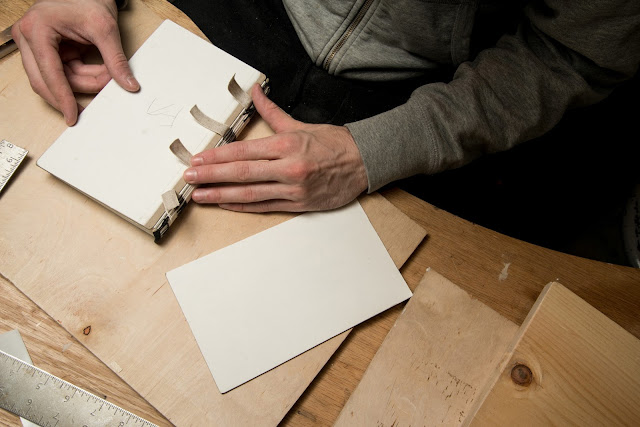Leather and Bookbinding
I am often struck by the depth of knowledge and skills one must attain to be any good at binding books. That's not to say that one can not make a fine book without these things but the nuance of the art seems to come form being able to make well informed decisions. I find it almost thrilling (that is after the panic) to come to a roadblock in a process or job and be forced down a detour to another skill or process that must be concurred before continuing.
Three years ago around this time I was in my final semester of my masters, my thesis consisted of a book for which I spared no expense. It was the first time in the eight years since I had started to learn the craft that I had touched a fine bookbinding leather. It was one of those moments that doesn't gain its psychological weight until it ripens with age and when it does its almost obvious.
I had an English style leather pairing knife for a couple years, purchased in 2010 because of its inexpensive price and numerous mentions in bookbinding how-to books. Suffice to say, when combined with low quality questionable origin skins the results were less than successful.
But one can not be disheartened simply because there initial attempt becomes a massive (bloody) failure. For when I researched in earnest I found that among all the things I was doing wrong the one that made all the difference was the investment in time and tools to perfectly sharpen a blade. That the bench stone I picked up from a hardware store with a 'coarse' and 'fine' side was good at being a paperweight and thats all. For me the journey was longer, yes but well worth the trouble because I know something that I know to be true that I hadn't found written yet. That to attempt leather work in bookbinding means to first master the art of knife sharpening.
Three years ago around this time I was in my final semester of my masters, my thesis consisted of a book for which I spared no expense. It was the first time in the eight years since I had started to learn the craft that I had touched a fine bookbinding leather. It was one of those moments that doesn't gain its psychological weight until it ripens with age and when it does its almost obvious.
I had an English style leather pairing knife for a couple years, purchased in 2010 because of its inexpensive price and numerous mentions in bookbinding how-to books. Suffice to say, when combined with low quality questionable origin skins the results were less than successful.
But one can not be disheartened simply because there initial attempt becomes a massive (bloody) failure. For when I researched in earnest I found that among all the things I was doing wrong the one that made all the difference was the investment in time and tools to perfectly sharpen a blade. That the bench stone I picked up from a hardware store with a 'coarse' and 'fine' side was good at being a paperweight and thats all. For me the journey was longer, yes but well worth the trouble because I know something that I know to be true that I hadn't found written yet. That to attempt leather work in bookbinding means to first master the art of knife sharpening.




Comments
Post a Comment